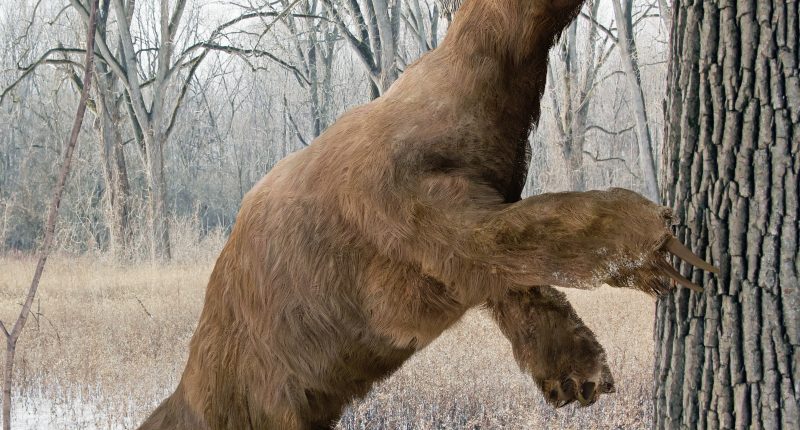LONG before the United States came to exist, North America was populated with giant and exotic creatures that are now extinct.
Time travelers visiting the continent tens of thousands of years ago might have come face-to-face with animals towering sloths and even a cheetah.
Here are three of the creatures you might’ve found while wandering across North America in prehistoric times.
GIANT SLOTH
Officially known as Megalonyx, this giant great sloth would have dwarfed any ancient human.
They reached up to 9.8 feet in length and could weigh as much as 2,200 pounds.
Its range spanned most of the United States as it stands today, and would’ve even extended to Alaska in warm periods.
The Megalonyx is famous for having been originally described by yet-to-be-president Thomas Jefferson in 1799.
He described remains found in West Virginia with the species Megalonyx jeffersonii named in honor of him.
The giant ground sloth would’ve lived from around 5 million years ago before it died out roughly 13,000 years ago.
This was around the same time that woolly mammoths and saber-tooth cats went extinct.
Most read in Science
CAMELOPS
Camelops is a long-extinct genus of large camels that lived in both North and Central America.
In fact, it even reached as far as north as Alaska.
Camelops first appeared at some point between three and four million years ago – and then died out around 13,000 years ago.
They reached up to 7 feet tall at their shoulder and – like the Megalonyx – could weigh up to 2,200 pounds.
Despite being associated with Asia and Africa today, the Camelidae family of animals – including modern camels and llamas – originated in North America around 44 million years ago.
AMERICAN CHEETAH
The American cheetah – or Miracinonyx, as scientists would call it – is a now-extinct cat genus.
They were endemic to North America between 2.5 million and 16,000 to 12,000 years ago.
And scientists think the the 150-pound cats were very similar to modern cheetah.
The genus is generally considered to have two species: M. inexpectatus and M. trumani.
M. inexpectatus is believed to have come first, was more cougar-like, and may have lived alongside (and competed with) jaguars and saber-toothed cats.
Meanwhile, M. trumani was more cheetah-like, but with fully retractable claws (unlike the modern kind).
READ MORE SUN STORIES
It’s believed to have hunted running prey like pronghorn and horses, as well as sheep and goats.
Miracinonyx fossils have been found in Arizona, California, Colorado, Georgia, Maryland, Nebraska, New Mexico, Pennsylvania, South Carolina, Texas, West Virginia, and Wyoming.
A timeline of life on Earth
The history of the planet in years…
- 4.6billion years ago – the origin of Earth
- 3.8billion years ago – first life appears on Earth
- 2.1billion years ago – lifeforms made up of multiple cells evolve
- 1.5billion years ago – eukaryotes, which are cells that contain a nucleus inside of their membranes, emerge
- 550million years ago – first arthropods evolve
- 530million years ago – first fish appear
- 470million years ago – first land plants appear
- 380million years ago – forests emerge on Earth
- 370million years ago – first amphibians emerge from the water onto land
- 320million years ago – earliest reptiles evolve
- 230million years ago – dinosaurs evolve
- 200million years ago – mammals appear
- 150million years ago – earliest birds evolve
- 130million years ago – first flowering plants
- 100million years ago – earliest bees
- 55million years ago – hares and rabbits appear
- 30million years ago – first cats evolve
- 20million years ago – great apes evolve
- 7million years ago –first human ancestors appear
- 2million years ago – Homo erectus appears
- 300,000 years ago – Homo sapiens evolves
- 50,000 years ago – Eurasia and Oceania colonised
- 40,000 years ago – Neandethal extinction















